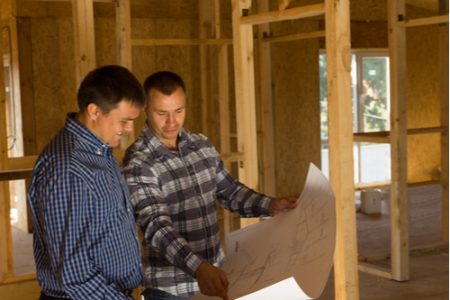
7 Things Builders Should Tell Architects – But Haven’t
Sound, two-way communication between architects/designers and builders will always smooth project delivery.
Occasionally, things get missed, so here are 7 tips to engage and improve outcomes for your projects:
- Estimating Concepts is Difficult for Builders Because:
- It takes just as long to estimate a concept as it does detailed drawings
- They still have to reach out to all their subbies/suppliers
- Is highly speculative (the client might just walk away if they get a fright)
- They’re often not paid for the estimate
- The builder has to guess or assume what’s in the missing detail
- It’s easy to assume that everything will go smoothly
- The estimates are often below the actual price
- Future price changes can create unforeseen cost escalations
The alternative is for you to use ProCalc – the builder’s Price Guide – from your desktop. Book a free trial and tutorial now.
2. Different Clients Can Sometimes Attract Different Pricing
Most builders regard themselves as business owners, making business decisions.
That is, a mature, successful builder will base their pricing strategy on some hard-learned lessons from the field – that’s a builder’s job.
This means that an established builder will have mechanisms in place to ensure their business remains profitable – no matter what client engages them.
Let’s look at two extremes:
- The casual client who’s “easy to please” and very understanding
- The meticulous client who will be quite exacting throughout the build (and possibly on site every night after the builder’s gone home!)
An experienced builder will assess the client’s needs before developing costings.
That is, if a builder believes the second client will require additional support, they will then try to quantify that into hours of their time, the associated risks, opportunity costs and more.
There’s nothing unfair in that approach. As a prudent business owner, a builder simply needs to cost in time and effort to ensure they meet this client’s expectations.
Builders who differentiate between clients will have fewer problems throughout the project than builders who treat all clients as the same (and underquote).
See how ProCalc captures this in this demonstration video
3. Documentation Quality Can Dramatically Affect Builders’ Estimates
Building is a high-risk business. For example, if a builder badly underquotes on just one or two projects, their livelihood can be under threat.
So, the more robust detail provided in the documentation, the more accurate the costings will be.
If design documentation requires further clarification, you need to make a choice about how you manage that ‘unknown’.
Generally, builders have three options:
- Hold off on estimating until they’ve obtained clarification
- Add the ambiguous item to a list of exclusions
- Adopt the worst-case scenario and allow for the most expensive option to ensure they’ve covered all contingencies.
Discuss the approach. Covering this territory will help eliminate surprises down the track for everybody.
4. The Kinds of Projects Builders Prefer
What’s the builder’s project selection criteria?
Most experienced builders will be able to list their project selection criteria without hesitation. Afterall, you live it.
Discussing this means everyone knows which jobs are suited to each builder.
5. A Sensible Builder Will Have Many Jobs in Their Pipeline
Clients change their minds, delays occur and builders’ competitors win projects. Builders recognise these as facts of life.
So, to have a steady stream of work, builders entertain several enquiries to ensure ongoing projects.
It also helps the builder choose the best projects for their business, employees and sub-contractors.
Transparency in how the sales pipeline works can help future jobs.
6. Invite Projects with Short Lead Times if the Builder’s Pipeline Can Take it
From time-to-time, clients “fall out” of the Builders pipeline.
Be it finance restraints, the arrival of a baby, family demands or any number of surprises, clients sometimes put projects on hold at the 11th hour.
They then have to scramble to fill the pipeline gap with another project – with as little as 30 days’ notice.
If you have a broad network of Architects/Designers/Builders, flagging the gaps to one another will help fill them.
Estimate likely construction costs with ProCalc
7. Your Assumptions When Estimating
No matter how detailed the project documentation is, Builders will always need to make a set of assumptions.
It’s vital these are shared in order to successfully manage the project – and client expectations. So, declare them.
This approach protects the builder, your client and the architect from future misunderstandings.

Author Richard Armstrong is a project manager & former registered builder who specialises residential construction pricing. With post-grad property qualifications and over 15 years’ design & construct experience, he is the Founding Director of ProCalc – Professional Construction Estimator. Free trial at www.procalc.com.au.









